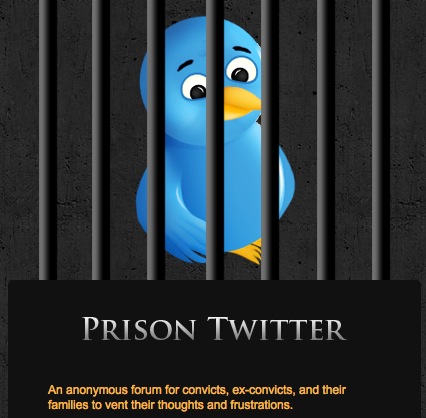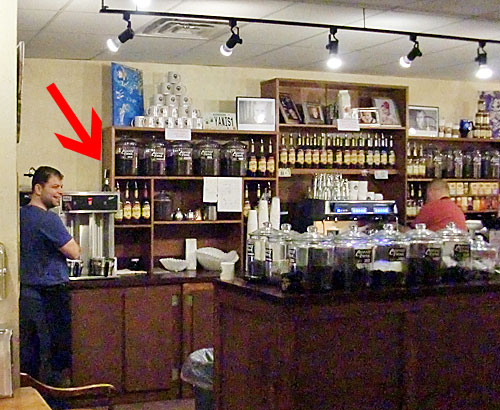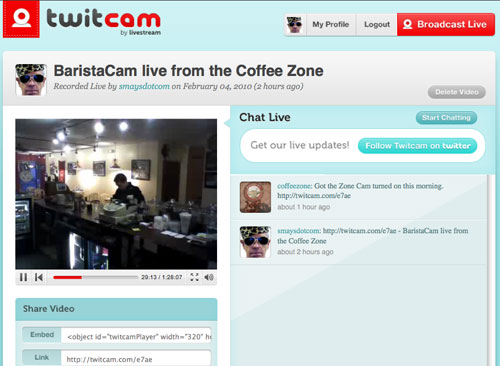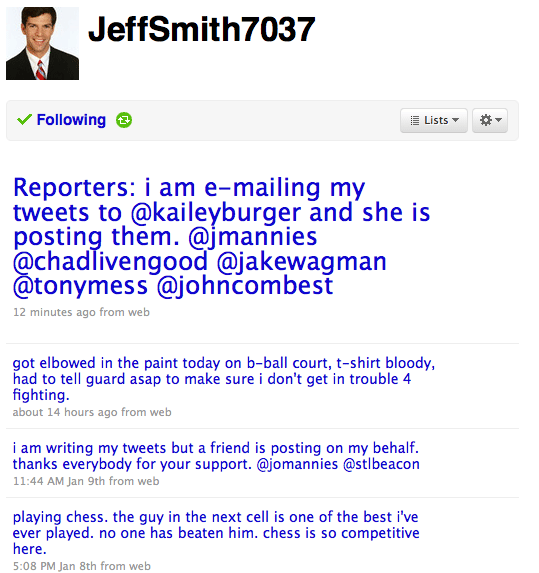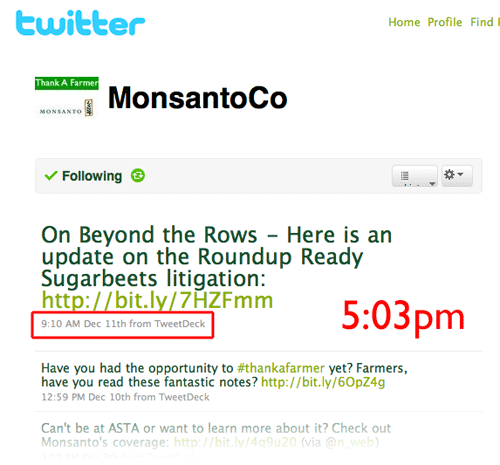This site is not live yet but you can get email notification. Assume the convicts won’t be tweeting directly. I’m trying to imagine how this won’t be a bit of a downer.
Tag Archives: Twitter
twitcam
Streaming live video has never been easier. Ironically, the bigger challenge is coming up with something anyone would care to watch. Which I clearly demonstrated this morning at the Coffee Zone.
In the photo above, you can see my BT-1 wireless webcam atop the Rocket Fuel storage tank. I was sitting about 25 feet away and never lost the signal.
Instead of uStream or qik (which works with mobile phones only, as far as I can tell), I used a nifty site called TwitCam. The screenshot below is really all there is to twitcam. And, yes, it’s free. For now. You just log in with your Twitter info and go. TwitCam records as it streams. No option for live stream only, as far as I could determine. I don’t see how video can get much easier than this.
As soon as I can come up with something worth the bandwidth, I’ll take this back to the state capitol.
The art of the tweet
From a thoughtful –and useful– post by Tammy Erickson (@tammyerickson) on how to make Twitter fun for your followers:
- Don’t report banal details. Unless you’re observing a true breaking news event (and note: this term does not include what you or your child ate for lunch), skip it.
- Do interpret your experiences. How do they make you feel? What do they mean to you?
- Do share the oddities you observe. Look for things that seem unusual, out-of-place, surprising.
- Do share things you love – quotes, phrases, descriptions of events that brought joy to your day.
Her conclusion:
“Slow down, enjoy. Listen to the world’s music. Share the best of your experiences, but remember, 140 characters is a unique format — more like poetry or Haiku than news reporting.”
Tweeting from the slammer
I didn’t follow the story of the arrest and conviction of Jeff Smith last year. Here’s a couple of grafs from Wikipedia:
“Jeff Smith was a Democratic member of the Missouri Senate, representing the 4th district, covering the western portion of the City of St. Louis. On August 25, 2009 he pled guilty to two counts of obstruction of justice and resigned his seat. He admitted his involvement, and attempted cover-up, in two federal election law violations committed during his 2004 campaign for Congress.
Each conspiracy count is punishable by up to 20 years in prison and $250,000 in fines. He resigned effective August 25, 2009 and was sentenced to 1 year and a day of prison. He also was fined $50,000. His lawyer requested Smith be sent to a prison camp in Marion, Illinois.”
This morning I learned from @chadlivengood that Mr. Smith (@jeffmsith7027) is on Twitter. Seems Mr. Smith emails his tweets to a friend who posts for him.
I’m a curious why he has access to email but not Twitter? Anybody help me out with that? Would love to interview someone with the federal prison system who could illucidate.
Are there lots of federal prisoners on Twitter? Is there a list somewhere? What –if anything– does this say about social networking? Do prisoners within the same facility follow each other? Would it be tacky to do @fakejeffsmith feed with humorus tweets. Yes, I’m pretty sure it would.
Monsanto Twitter silence on AP story
I just spotted (in Google Reader) an Associated Press story about Monsanto with the headline: Monsanto seed business role revealed. Here’s the first graph:
ST. LOUIS — Confidential contracts detailing Monsanto Co.’s business practices reveal how the world’s biggest seed developer is squeezing competitors, controlling smaller seed companies and protecting its dominance over the multibillion-dollar market for genetically altered crops, an Associated Press investigation has found.
I was curious what the twitterverse was saying about the story and found an endless stream of links and comments. No surprise there.
I’ve been following one of Monsanto’s Twitter feeds (@monsantoco) for a while and dropped into see how they were responding to the story and the Twitter buzz.
Nothing since Friday morning at 9:10. Hard to draw any conclusions without know more but with almost 3,000 followers, why wouldn’t you use Twitter to “engage in the conversation.” If not now, when? If not Twitter, how? If you’re going to use social media to tell your story, you gotta be there if/when the story gets unpleasant or be conspicuous by your absence.
Depending on the serious of the AP investigation, there are probably lots of emails and phone calls and maybe even a few meetings, to decide if/how/where to respond to the story.
If anyone on Learfield’s senior management team are reading this, take a few minutes at your next meeting to talk about how you would respond to a big, negative story about our company. I really think we could engage quickly without making our lawyers all jittery and nauseous.
Disclosure: Monsanto is an advertiser on at least one of the radio networks owned by the company I work for.
UPDATE: Monsanto did get a response up last night. And linked to it from Twitter. Probably hard for a company that large to move any faster.
“How Twitter is changing the face of media”
This post by Soren Gordhamer (at Mashable.com) resonates for those of us who followed/participated in the “reporting” of “the hostage situation that wasn’t” here in Jefferson City.
“Sure, in the past, you could always email or call a friend to inform him or her of a quality news story or TV show; now, however, in a matter of seconds you can share this information on your broadcasting network via Twitter or Facebook, with tens, hundreds, or even thousands of people. It’s not my or your media anymore; it’s our media, and we can all broadcast it.” [Emphasis mine]
“In the past, what people thought of as “news” was what was reported that day in the New York Times or CNN. In an age where we all possess our own broadcasting network, though, smaller stations have greater power. Of course, a post on Twitter from CNN, which has over two million followers, will get more views than one from Joe Smith who has 20 followers will, but Joe Smith is at least in the game now, where he was not previously.”
“In the new media landscape, the task of defining what is the news that matters to people lies less with a few major media outlets, and much more with the millions of small outlets like you and I who each choose what to talk about. Increasingly, lots of littles, in aggregate, are becoming more powerful than a handful of bigs.” [Emphasis mine]
“Media is also becoming more personal. More and more people expect their broadcasting networks to be people with personalities, not simply sources of news. We want to know as much about the person reporting news as we do the news they are reporting. [Emphais mine] Broadcasting is more a personal act than ever, as users seek to have connections not just to content but to people.”
Mr. Gordhamer is the author of the book, Wisdom 2.0 and the organizer of the Wisdom 2.0 Conference.
This tweet just in…
Yesterday’s dust up in Jefferson City provided a good look at how local news media (and civilians) would use Twitter to “cover” a breaking news story. I haven’t seen all the tweets posted by @misourinet but during the few minutes I was in the newsroom, our reporters we’re being cautious about what they posted. I think we did retweet some stuff that turned out to be inaccurate but I’m not sure about that. I did get he sense they were trying to be restrained and confirm information.
Some news outlets were posting corrections as fast as updates. And the public was under no constraints at all. Missouri Lt. Governor Peter Kinder had his BlackBerry hotter than Tim Pawlenty’s wife. Unfortunately, much of what he tweeted was wrong.
Old news dogs will decry such Twitter frenzy but I didn’t have any trouble sifting the wheat from the chaff. And this kind of rumor wildfire has always been there, it just wasn’t up where we could watch it. It was one-to-one, not one-to-the-universe.
At one point, I saw a young woman –a reporter, I assumed– with a Marantz recorder and microphone (I had one just like it). The plan was, I suppose, to record an interview or some “nat sound,” go back to the radio station (?), “cut up” the audio, write a story and hope to get it done in time for the next newscast. Or post it to the station website.
I don’t know if that’s enough –or fast enough– any more.
All I had was the iPhone but if I could have gotten an interview, I could have posted audio and/or video immediately. From where I was standing.
Back on Twitter for a minute… people like Tony Messenger and Chad Livengood long ago established their Twitter cred. Following their updates was as close to real-time updates as you’re gonna get in a situation like this (one of the local radio stations did cut into syndication natioal shows with updates a couple of times).
I think our network (@missourinet) picked up 50 or 60 new followers yesterday, on the stength of frequent, accurate posts.
Was there a “better” way to follow yesterday’s events? I’m not sure what it would be. Will we get better at using this tool (both to monitor events and to report them)? I’m sure we will.
Gnomedex 9: Frank Eliason, the Comcast Cares guy on Twitter
What does it mean with the doctor tweets “oops?”
I got a call this morning from Matt Kelley, a reporter for Radio Iowa (one of Learfield’s news networks). He was working on a story involving Twitter and he wanted to check a couple of terms. Here’s the story (minus the audio):
A Cedar Rapids medical center plans to use the social media tool Twitter to broadcast a surgery to the world next week. Doctors at St. Luke’s Hospital will perform a hysterectomy, and other procedures, as people who’re interested follow along via web browser or mobile device. Hospital spokeswoman Sarah Rainey (RAY-nee) says it’s an educational opportunity.
Rainey says, “We have marketing consultants who will be in the operating rooms with the surgeons as the surgery takes place and as the physician communicates exactly what he’s doing, we will have our consultants tweeting, or typing in conversation to bring it to the outside world.” She says two doctors will be performing the operation on a 70-year-old woman using robotic surgery techniques. The play-by-play will be sent out over the micro-blogging service in messages of 140 characters or less.
“He’ll be talking about how the anesthesiologist is now placing the patient under sedation and here’s my first step, so he will be talking as he goes through the procedure,” Rainey says. “You’ll hear him say, ‘Scalpel, please,’ or whatever he may need to instruct the O-R team to help him with.” She expects a wide host of Iowans — and people around the globe — to follow the surgery, starting at 10 AM next Monday.
She says they’re targeting people in the Twitter audience, roughly between the ages of 25 and 45. “We’re looking for people that just might want the opportunity to go into an O-R suite and see what happens without visually seeing all of the stuff that maybe they don’t care to see,” Rainey says. The hospital recently featured a “webcast” of the same type of surgery so anyone in the world could watch it live over their computers.
“With the webcast, you actually got to see everything that was going on in the O-R suite,” Rainey says. “It might be cutting open the patient, it might be a little blood, it might be the suction part, so for some people it might’ve been too much. Tweeting, on the other hand, is communicating through emails and tweets so it’s a little gentler on the eyes.” She says St. Luke’s will be the first Iowa hospital to “Twitter-cast” a surgery. To follow it, go to the hospital’s website “www.stlukescr.org” and click on the Twitter icon.
My friend David insists this is a “gimmick” and nothing more. That nobody would have the slightest interest in following this procedure on Twitter. I’m not as convinced.
Seperating the Twitter wheat from the chaff
I think I mentioned trying TwitBlock.org, a website that scans your Twitter followers and ranks them for “spamminess.” Higher the score, more likely to be spam. Looks at things like how many people you foll0w, how many times you’ve tweeted, and so forth. It’s not perfect but it’s better than nothing. And my rule of thumb is, “When in doubt… block.”
I’ve heard from one acquaintance who wanted to know why I blocked him. I unblocked and the pot’s right now. But there are sure to be more. Just ping me.

